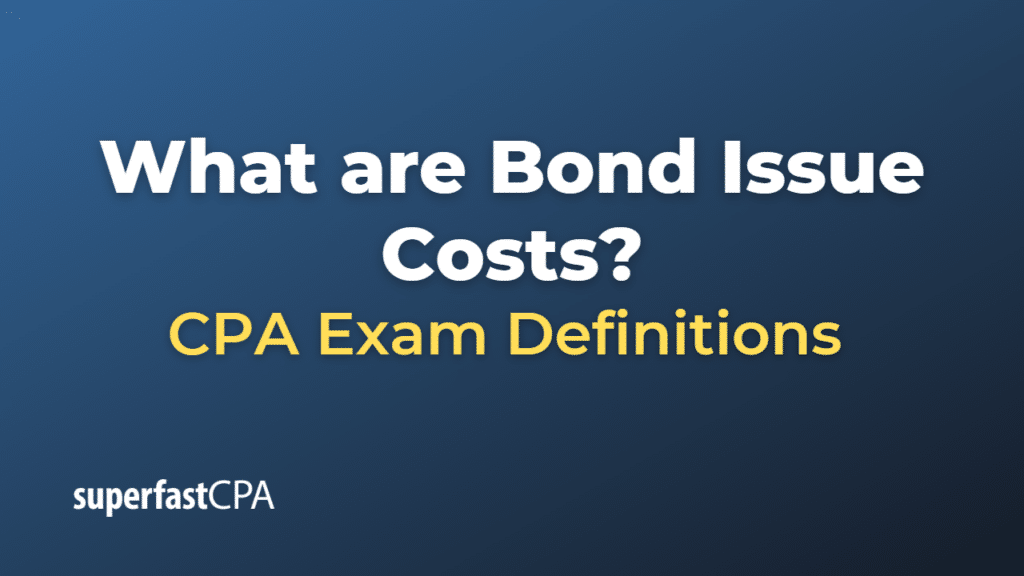Bond Issue Costs
Bond issue costs are the expenses incurred by a company or organization when issuing bonds to raise capital. These costs are associated with the preparation, marketing, underwriting, and distribution of bonds to investors. Bond issue costs may include, but are not limited to:
- Legal fees: Costs associated with drafting and reviewing bond documents, ensuring regulatory compliance, and obtaining legal opinions on the bond issuance.
- Underwriting fees: Fees paid to investment banks or financial institutions that underwrite the bond issuance, guaranteeing to purchase the entire bond offering and reselling it to investors.
- Rating agency fees: Fees paid to credit rating agencies, such as Moody’s, Standard & Poor’s, or Fitch, for assessing the creditworthiness of the bond issuer and assigning a credit rating to the bonds.
- Printing and distribution costs: Expenses related to printing the bond prospectus, marketing materials, and other documents, as well as the costs of distributing them to potential investors.
- Trustee fees: Fees paid to the trustee, an independent third party responsible for overseeing the bond’s administration and protecting bondholders’ interests.
- Registration and filing fees: Costs associated with registering the bond issuance with regulatory authorities, such as the Securities and Exchange Commission (SEC) in the United States.
Bond issue costs are typically capitalized and amortized (expensed) over the life of the bonds, rather than being expensed all at once when the bonds are issued. This accounting treatment spreads the bond issue costs over the term of the bonds, reflecting the costs as a part of the overall financing expense associated with the bond issuance.
When a company issues bonds, it should carefully consider the bond issue costs, as they can impact the overall cost of financing and may influence the decision to issue bonds or pursue alternative financing options.
Example of Bond Issue Costs
Let’s consider a hypothetical example of a company called “Green Energy Solutions” that is planning to issue bonds to raise capital for a new solar power plant project.
Green Energy Solutions intends to issue a 10-year bond with a face value of $10,000,000 and an annual coupon rate of 4%. To issue the bonds, the company incurs the following costs:
- Legal fees: $100,000
- Underwriting fees: $150,000
- Rating agency fees: $50,000
- Printing and distribution costs: $30,000
- Trustee fees: $20,000
- Registration and filing fees: $10,000
The total bond issue costs amount to $360,000. These costs will be capitalized and amortized over the 10-year life of the bonds.
To calculate the annual amortization of bond issue costs, we divide the total bond issue costs by the number of years of the bond term:
Annual amortization of bond issue costs = $360,000 ÷ 10 years = $36,000 per year
Green Energy Solutions will expense $36,000 per year as bond issue costs on its income statement over the 10-year life of the bonds. By amortizing the bond issue costs, the company spreads these expenses over the term of the bonds, reflecting them as part of the overall financing cost associated with the bond issuance.
When evaluating the bond issuance, Green Energy Solutions should consider these costs, along with the interest expense, to determine the total cost of financing the new solar power plant project through bonds. This information can help the company make informed decisions about whether to issue bonds or explore alternative financing options.













